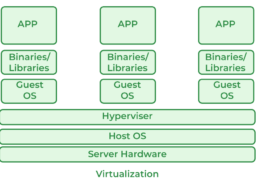Blockchain roadmap/ project for beginners
Managing token limits in large language models (LLMs) like GPT-4 requires advanced techniques to ensure essential information is preserved and responses remain coherent. Key strategies include: Dynamic Token Management: Use a sliding window approach and priority scoring to adjust context dynamicallyRead more
Managing token limits in large language models (LLMs) like GPT-4 requires advanced techniques to ensure essential information is preserved and responses remain coherent. Key strategies include:
- Dynamic Token Management: Use a sliding window approach and priority scoring to adjust context dynamically based on relevance and importance.
- Context-Aware Truncation: Implement semantic chunking and topic segmentation to truncate text at natural boundaries, maintaining coherence and context.
- Selective Information Prioritization: Prioritize entities and key terms using entity recognition and dependency parsing to retain critical information.
- Advanced Compression Algorithms: Employ knowledge distillation, selective attention mechanisms, and contextual embeddings to compress information effectively.
- Hierarchical Summarization: Perform summarization at multiple levels, summarizing sections first (micro) and then the entire document (macro).
- Reinforcement Learning: Utilize reward-based truncation and adaptive context length to train models for efficient token management.
- Novel Algorithms: Explore sparse attention models and neural topic models to handle longer sequences and focus on relevant tokens.
Implementing these strategies, including preprocessing, chunking, contextual understanding, and fine-tuning, optimizes token usage, preserving essential information and ensuring coherent responses in LLMs.
See less

Creating a blockchain project roadmap for beginners involves understanding the fundamental concepts, choosing the right tools, and following a structured learning and development path: Begin by learning the basics of blockchain technology. Understand key concepts like decentralization, consensus mecRead more
Creating a blockchain project roadmap for beginners involves understanding the fundamental concepts, choosing the right tools, and following a structured learning and development path:
Begin by learning the basics of blockchain technology. Understand key concepts like decentralization, consensus mechanisms, smart contracts, and cryptographic hashing. Online courses, tutorials, and books can provide a solid foundation. Next, select a blockchain platform to work with; Ethereum is a popular choice due to its robust development community and extensive documentation. Install the necessary development tools, such as Node.js, Truffle, and Ganache for Ethereum.
Start with simple projects to build practical skills. Create and deploy a basic smart contract using Solidity, Ethereum’s programming language. Gradually progress to more complex contracts that involve real-world use cases like token creation or simple decentralized applications (DApps). Familiarize yourself with development environments like Remix and integrated development environments (IDEs) such as Visual Studio Code.
Join blockchain communities and forums to seek advice, share knowledge, and stay updated on the latest developments. GitHub repositories and open-source projects are valuable resources for learning and collaboration. As you gain confidence, participate in hackathons or contribute to existing projects to enhance your skills and network with other developers.
Finally, consider exploring advanced topics like decentralized finance (DeFi), non-fungible tokens (NFTs), or layer 2 solutions to deepen your understanding and expand your project portfolio.
See less